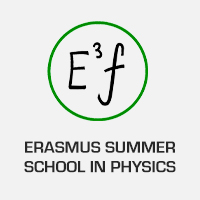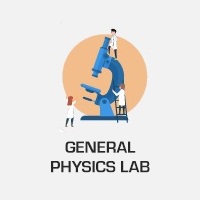A researchers’ multidisciplinary group of the Universitat de València is designing instruments for the Solar Orbiter Mission which the European Space Agency (ESA) and NASA will launch in 2018. The goal is to make a close approach to the Sun reaching less than one third of the distance between the star and the Earth. The group counts on Vicente Domingo, Honorary Professor and the scientific director of the SOHO satellite. The latter, whose mission is to study the Sun, was launched 20 years ago. A commemorative act to celebrate the anniversary of launching was held a few weeks ago in Paris.
Research staff of the GACE/LPI (Astronomy and Space Sciences Group, Image Processing Laboratory), Department of Electronic Engineering (School of Engineering) and Department of Astronomy and Astrophysics (Faculty of Physics) of the Universitat de València are working in the final stages of development and manufacturing of PHI instruments (Polarimetric and Helioseismic Imager) that will be transported in ESA’s Solar Orbiter satellite.
PHI is an instrument which is considered to be the successor of IMaX (from previous mission named SUNRISE) and will study the solar magnetic field measuring the photospheric plasma shift and carrying out helioseismic analyses. This tool is currently being developed by German Institutes led by MPS (Max-Planck-Instituto für Sonnensystemforschung); a French Institute (Institut d’Astrophysique Spatiale); and a Spanish consortium led by IAA/CSIC (Institute of Astrophysics of Andalusia) in which the Universitat participates through GACE Group together with other countries’ cooperation. The research team has been working in the project for more than 10 years, since the first stage of scientific definition of the instrument until the current stage of manufacturing and integration of the flight model.
“The Solar Orbiter will fly an orbit outside the ecliptic (orbital plane of the Earth) reaching an angle of more than 30 degrees. In fact, for the first time this will allow us to perform close observations of the Sun’s Poles in high definition”, explains José L. Gasent Blesa, IMaX-PHI project manager in the Universitat. The mission includes observation distance monitoring instruments such as PHI itself and instruments which will analyse particle streams discharged by the Sun and received by the satellite. The 10 instruments’ combination to the satellite will allow it to make up an unprecedented overall description of the Sun and the interplanetary environment.
PHI consists basically of two units: Electronic Unit and Optics Unit, fitted with a high-resolution and a solar full-disk telescope. In addition to providing data of the Sun in high-resolution, PHI will be a pioneer in the use of several technologies in Space. Moreover, PHI’s data processing strategy is relevant because it will autonomously be carried out on board before sending results to the Earth using a complex compression process.
“UV’s Group contributes to PHI’s scientific definition and is responsible for programming the simulator’s coding of the instrument; designing, manufacturing and verifying the conversion system and power distribution; and for the structural module of the electronic unit. It is also in charge of the structural analysis of the unit and supports the verification of the instrument realizing structural and crash testing, or electromagnetic compatibility”, explains José Luis Gasent.
Research work of GACE Group’s solar physicist, led by Vicente Domingo, is currently focusing on the study of small magnetic structures which are present in the solar surface, also known as photosphere. These structures contribute to the overall behaviour of the Sun including its magnetic field and the emission of energy. They also allow to trace recurring phenomena of the Sun, such as the changes undergone by the star throughout its activity cycle.
SUNRISE Project
The Group has taken part in SUNRISE Mission, consisting of a telescope of one meter in diameter launched in a stratospheric balloon reaching approximately 40 kilometres in altitude, from NASA’s Long Duration Balloon Programme. The project is implemented in collaboration with institutions from several countries, such as Institutes MPS and KIS (Kiepenheuer für Sonnenphysik); HAO (High Altitude Observatory) and LMSAL (Lockheed Martin Solar and Astrophysics Laboratory) from USA; and basically, the same Spanish consortium which works in PHI, made up by IAC (Instituto de Astrofísica de Canarias), IAA/CSIC, INTA (National Institute of Aeronautics), University of Barcelona, Universidad Politécnica de Madrid and Universitat de València. José Carlos del Toro Iniesta (IAA/CSIC) is main co-researcher of the project and the PHI instrument.
Mission has flown on two occasions (June 2009 and 2013, from Kiruna Sweden to Northern Canada) and has obtained uninterrupted solar shots, without day-night cycle, of outstanding quality given that there are little atmospheric disturbances. The Spanish consortium is responsible for IMaX (Imaging Magnetograph eXperiment), mission’s main instrument.
“IMaX allows to study magnetic field and flows of speed on the sun’s surface with an extraordinary quality, and spatial and temporal resolution. Research articles based on IMaX and SUNRISE data have been published”, points out Julián Blanco, solar physicist from the group of the Universitat de València. Work is in progress to achieve a third flight of SUNRISE with new instruments (including also IMaX+), extending collaboration with Japanese institutions. A process in which GACE will have an important role (scientific definition, analysis and reduction of data, Electronic Engineering and Structural Engineering).
Vicente Domingo
Vicente Domingo Codoñer is Honorary Professor in the Department of Astronomy of the Universitat de València and member of GACE/LPI. He has a wide research experience within the field of nuclear and particle physics, solar physics and spatial projects. He has worked, among others, in the IFIC/CSIC-UV, in Centre d’Éstudes Nucléaires (France), in CERN (Switzerland), in Universidad de la Paz (Bolivia), in MIT (USA) and in University of Colorado (USA). In 1970 he joined the ESA being the responsible scientist of the SOHO Mission Project during its development until 1995. Between 1995 and 1998 he was in charge of its functioning as director from NASA’s Goddard Space Flight Center, in Maryland (USA). In 2000 Vicente Domingo came back to the Universitat de València in order to form a group of solar physics and spatial instrumentation development for solar missions, within the Astronomy and Space Science Group (GACE).
SOHO satellite
SOHO satellite is a joint mission ESA/NASA whose fundamental goal is the study of the Sun from an orbit which is placed between the Earth and the Sun, near L1 Lagrange point. SOHO, launched in December 1995, started operations in May 1996 with a nominal duration of two years. It is been now functioning for 20 years and it is the oldest solar observation satellite in history.
“Knowledge regarding the Sun has increased exponentially thanks to SOHO contributions when it comes to brilliance, particle streams and its relationship with the Earth. With the contribution of the data provided by the satellite, more than a thousand scientific articles have been written until today. It is also the greatest mission in terms of searching and finding comets, a milestone that totals more than three thousand discoveries, of which a significant amount has been discovered by amateurs”, states Julián Blanco.
In May, main responsible scientists for the development teams met in Paris for the 20th anniversary of the satellite’s start of operations. Vicente Domingo, scientific director of the mission for more than 10 years, was one of the distinguished guests.
Images:






























